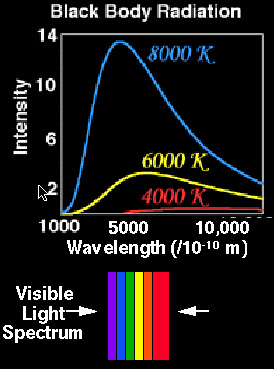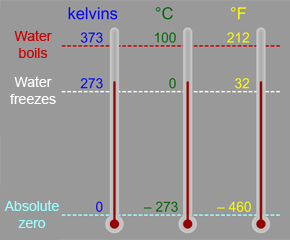ExploraTour: A Peek into the Lives of the Stars

Windows Original.
More About Black Bodies ...
Let's explore three different black bodies.
The curves on the left tell us the color and brightness (intensity) of light given off
by an equal-sized piece of black bodies with temperatures of
The color of the curve tells the color the black body would appear to the eye. The rainbow below the curve shows the position of the visible light band (light we can see) with respect to the light given off by these black bodies. The first thing to notice is though the light from the black bodies peaks at wavelengths we can see, much of the light given off is at wavelengths above and below our visual range.
The hottest black body (8,000 K) produces mostly blue light and a lot more of it than the cooler ones. The height of the curve tells us how much light.
The coolest black body (4,000 K) produces mostly red light. It is so dim compared to the hottest (blue) black body that it hardly shows up on the plot.
How do we use this information ... continue on to find out.











